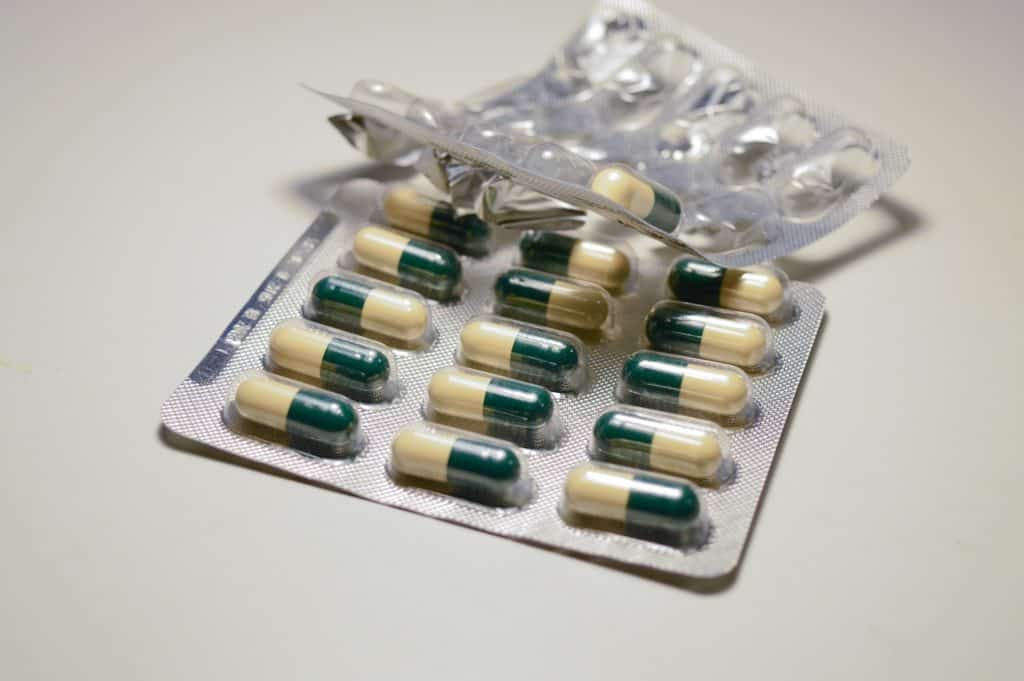In this article, we will talk about antibiotics that are used for UTI and can also act on Chlamydia.
First, we will talk about what Chlamydia is, how it is transmitted, and what symptoms it gives, as well as the antibiotics used in its therapy.
And then we’ll explain if UTI antibiotics can work on Chlamydia.

Chlamydia – chlamydia trachomatis is the most common bacterial sexually transmitted disease. Chlamydia is characterized by living within the cells of the genital and oral mucosa, which makes the host immune response very weak.
Specifically, the bacterium is protected by our own cells, which makes it harder for white blood cells to recognize it as foreign.
Thus, the symptoms of newly acquired chlamydia infection are usually mild and are characterized by a slightly increased discharge from the urethra, in the vagina, most often translucent or slightly whitish without any odor.
Chlamydia can be 80 percent symptom-free, which means that only 20 percent of cases have a secretion.
Chlamydia may have symptoms similar to that of a UTI infection (painful and difficult urination, frequent urination, urge to urinate, as well as urine that is cloudy, dark, and urine that has a strange odor), and it may itself cause a UTI.
In women, chlamydia infection can cause spot bleeding between cycles or after intercourse. In 10% of patients, the infection was followed by pelvic pain. In men, testicular pain also occurred.
Because chlamydia does not produce intense symptoms, it can be undiagnosed for years, which can have lasting consequences.
In men, asymptomatic infection is more common, and therefore it is necessary to exert pressure on men because they themselves do not want the treatment because they do not feel any symptoms.
Because Chlamydia infection requires treatment for both partners. Chlamydia infection is one of the most common causes of sterility in women or the occurrence of ectopic pregnancies.
The tubes of the fallopian tubes thicken with the smoldering inflammatory process and become impossible to the egg cell. Chlamydia complications at the level of the whole organism consist of inflammation of the conjunctiva, joints, and skin.
For the diagnosis of chlamydia, a deep urethral swab of the urethra is used in men, and in women, a swab is taken from the cervix.
Untreated Chlamydia infection as a sexually transmitted disease plays a role in the increased risk of contracting HIV (which greatly weakens the immunity) and therefore the body will find it much more difficult to fight if a UTI attacks. Therefore, it is very natural to start treatment for this disease in time.
How to treat chlamydia infection
1. The drug of choice for treating chlamydia is azithromycin 1gr oral single dose.2. Tetracycline (doxycycline) can also be used in chlamydia therapy 2 times 100 mg for 7 days.
Azithromycin is a drug that belongs to a group of macrolide antibiotics that has great efficacy against microorganisms such as Chlamydia. It is taken 1 hour before meals or 2 hours after meals.
Do not take medicines that counteract excess stomach acid along with azithromycin because they reduce the effect of azithromycin and make it less effective with UTI-induced Chlamydia infection.
You can avoid this by administering these medicines one hour before or 2 hours after azithromycin. These include Tums®, Rolaids®, Maalox®.
As we said in the treatment of Chlamydia, azithromycin is used at a dose of 1 gram in a single dose, and patients cannot expect this to be a magical drug that will immediately eliminate any unpleasant symptoms that this bacterium causes.
Azithromycin has a postantibiotic effect – which means that it can be effective for up to several days after the dose is given. Which means you have to endure for a few days until this medicine starts to show its full effect.
This puts many patients in a position to consult their physician and change therapy ahead of time, as they expect they are antibiotic to work very quickly.
Doxycycline is also an effective drug used to treat Chlamydia.
It has the same effect on Chlamydia as azithromycin but is associated with a number of side effects that are associated with the gastrointestinal tract such as diarrhea, nausea, nausea, vomiting, esophageal inflammation.
Sun allergy is also one of the side effects of doxycycline, suggesting that azithromycin is more suitable for use in Chlamydia.
It is also much easier for patients to take 1 dose of an antibiotic because when it is divided into multiple doses, they sometimes forget to take a dose which can reduce the effectiveness of antibiotics in the eradication of Chlamydia.
We conclude that the drug of choice for Chlamydia is the best azithromycin.
If Chlamydia were detected initially it would not cause urinary infections or other infections.
It is very important to constantly read and be instructed with the symptoms and problems of this bacterium if you are a risk group such as (frequent change of sexual partner, pregnancy).
Do these 2 antibiotics affect the UTI that causes Chlamydia or the UTI caused by Chlamydia?
Azithromycin is a drug that kills Chlamydia that causes UTI because of its high potential for penetration into the body and urine. While doxycycline does not have this effect.
Diarrhea that often occurs with the use of doxycycline can aggravate UTI in a way as frequent going to the toilet irritates the urinary organs and can cause UTI. Likewise, doxycycline does not reach the adequate urine concentrations required to treat UTI.
Will UTI antibiotics treat Chlamydia?
Cipro has produced variable results in the treatment of chlamydia, unlike levofloxacin and ofloxacin which have shown greater efficacy in treating chlamydia.
Levofloxacin is used 500mg orally once daily for 7 days in Chlamydia therapy, while ofloxacin goes 300mg twice daily for 7 days.
Despite these drugs being used to treat very complicated UTIs, which you would think would certainly work very well for Chlamydia, this is not true.
However, the drug of choice for Chlamydia that causes UTI is azithromycin at one dose of 1 gram per day is much more effective than the fluoroquinolone group of antibiotics.
However, in the event of an allergic reaction to azithromycin, your doctor will prescribe you ofloxacin or levofloxacin to help manage your symptoms.
There is also a third-generation cephalosporin antibiotics group such as ceftriaxone, cefixime that removes Chlamydia trachomatis that can cause UTI.
Aminoglycoside antibiotics used for UTIs such as gentamicin, amikacin, kanamycin have no effect on Chlamydia.
Now let’s see if antibiotics used to treat uncomplicated UTI infections can be used in Chlamydia therapy.
Pregnant women, as a risk group for Chlamydia, should be tested for this bacterium at the beginning of pregnancy.
If the test is positive you should not panic. There are antibiotics that can be used in pregnancy and are effective against Chlamydia. These are for example amoxicillin, erythromycin.
Amoxicillin is the drug of choice in pregnant women who have Chlamydia trachomatis.
Amoxicillin is also a drug used to treat uncomplicated UTI infections, so if you have a UTI infection besides Chlamydia in pregnancy, the drug of choice will definitely be amoxicillin.
Its dosage is 3 times daily 500mg for 7 days.
It was found to be in the correct ratio when compared to azithromycin.
Azithromycin cannot be used with certainty in pregnancy. Some doctors prescribe it, but it is still not safe with maximum safety in pregnant women.
Erythromycin from the macrolide antibiotic group may act on Chlamydia it’s given 4 times a day for 500mg for 7 days.
However, if Chlamydia caused a UTI infection, erythromycin would not be effective because it did not reach adequate concentrations in the urine, its metabolism is responsible for the liver and forced excretion via the liver.
Only 5 percent of the oral formulation comes into the urine. So it does not act in urine and cannot cure UTI infection.
As for the antibiotic, amoxicillin + clavulanic acid used in the treatment of uncompromised UTIs has shown that it is not much more effective than amoxicillin.
If amoxicillin does the job, there is no need to administer amoxicillin + clavulanic acid.
It is best to consult with your doctor and monitor your body and symptoms.
As regards pregnant women, ofloxacin, levofloxacin, which may also be used in Chlamydia therapy but also used for UTI infections, is not recommended for pregnant women due to their deleterious effect on the fetus.
In any case, do not panic. If your amoxicillin doesn’t work, which rarely happens, your doctor will explain to you that there is also a third generation of cephalosporin (ceftriaxone, cefixime), an antibiotic that can completely eliminate UTI-causing Chlamydia.
Co-Trimoxazole (sulfamethoxazole + trimethoprim) is also effective in Chlamydia causing UTI over self-administered sulfamethoxazole.
Compared to quinolones and azithromycin, cotrimoxazole has a weaker effect on the chlamydia that causes UTI.
In addition to the treatment prescribed by your doctor, you can, of course, lead a healthy lifestyle, more memory, take in more liquids, fruits, and vegetables.
One of the plants that are good to use to fight Chlamydia is echinacea. You can read more about it in my article Echinacea for UTI.
to sum it up
Will UTI antibiotics treat Chlamydia? Yes, some antibiotics used in the treatment of UTI can also have a beneficial effect on Chlamydia.
Amoxicillin can be the drug of choice in pregnant women, as well as treating UTI infection and Chlamydia.
Fluoroquinolones, levofloxacin, ofloxacin used to treat complicated UTI infections have shown great efficacy in Chlamydia therapy.
Cephalosporins can be used in the worst-case scenario and remove Chlamydia.
I hope you found this article interesting and useful, that you were able to extract some important information regarding Chlamydia.
If you are interested in everything about the antibiotics used for UTI, you are welcome to read other articles on my blog KNOW & TREAT UTI.
